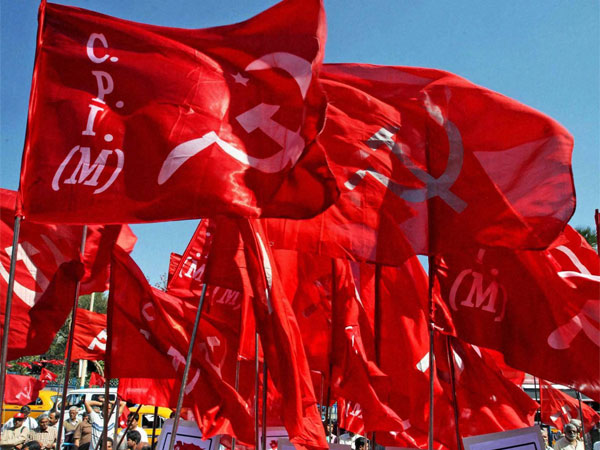The fight against the Bharatiya Janata Party’s (BJP) Narendra Modi-led government and the larger struggle against the communal and fascistic forces of Hindutva was one of the key issues in the resolution.
In an exemplary display of democratic decision-making, rarely seen on the Indian political stage, the 22nd all-India conference of the Communist Party of India (Marxist) concluded its debate on the main political resolution on 19th April, 2018. One of the key issues (though by no means the only one) in the resolution was of course the way forward in the fight against the Bharatiya Janata Party’s (BJP) Narendra Modi-led government and the larger struggle against the communal and fascistic forces of Hindutva.
The CPI(M) of course has publicly acknowledged that there was a serious internal debate on some aspects of the way the anti-BJP struggle was to be conducted. At the heart of this spirited, and often heated, debate was the question of the relationship of the CPI(M) with the Congress in this context. The majority of the members of the CPI(M) central committee were of the view that while the Congress could not be equated with the BJP on communalism, it was nevertheless the architect of many of the economic policies that the Left considered profoundly anti-people and that paved the way for the resurgence of Hindutva. Thus the argument that a decisive contribution to the fight against Hindutva could only be made by a strong left and democratic front that took a firm position against both Hindutva and neo-liberalism. The minority view in the Central Committee was however inclined to put a greater emphasis on the fight against communal forces, emphasising the secular credentials of the Congress, raising the possibility of an understanding with it based on the urgent need to unseat the Modi government. In this view the emphasis on fighting simultaneously the neo-liberal economic reforms was acknowledged, but was not seen as an absolute barrier towards forging an understanding with the Congress to fight the communal danger.
For months now the mainstream media has insisted on portraying this debate as a personality or factional clash. It was insinuated that it’s a clash between the current general secretary of the party, Sitaram Yechury, acknowledged as the architect of the minority line, and the previous incumbent, Prakash Karat, who has articulated the majority view of the Central Committee. Since the CPI(M) is a party that punches well above its electoral weight in the national political arena, assorted political commentators and intellectuals of the “liberal” variety had also begun fishing in the waters of what was essentially an intra-party debate, openly airing critical remarks of one or other of the individual leaders, in both mainstream and social media. On some occasions, such remarks have crossed the boundaries of acceptable commentary, descending into the crass promotion of the one side of the debate that they tended to favour, with an occasional dose of personal vilification against the other
Quite in character, the media is now interpreting the final outcome of the CPM’s discussion on its political strategy as a personal victory of the ‘minority’ line. This outright misunderstanding is based on the fact that the much debated line of the original draft that had forbidden any “understanding or electoral alliance with the Congress” was deleted in the version finally passed by the conference.
But a more unbiased reading of the situation tells a different story. After the open and free debate, conducted over two days at Hyderabad, it was clear that any clinching of issues must respect the profound desire of the vast majority of delegates present for a decision that unites all rather than a divisive one. It is in this light that the final formulation strengthens the original resolution of the Central Committee, while respecting this desire for unity. The final resolution makes clear that there will be “no political alliance with the Congress Party.” Respecting the desire for unity in the fight against Hindutva, it specifies the scope and limits of the term “understanding” turning it from a catch-all, ambiguous phrase to a specific guide to larger, unified action against Hindutva. It calls for mobilising people against the communal threat and fostering actions that lead to all-round class and mass mobilisation, even from the followers of other parties, while not foregoing the possibilities in parliament for isolating the BJP on specific issues. Unambiguously it also reiterates the importance of building the left and democratic front, reiterating the conclusion that the CPI(M) had reached at its last all-India conference at Visakhapatnam four years ago.
All communist parties are put to the test whenever they have to choose between the easy illusion of electoral gains as the basis for political advance on the one hand, and on the other, political advance based on enhancement of its independent political strength built on mass mobilisation and struggles. The CPI(M) is no exception and has been put to the test repeatedly on this score, tests from which it has by and large, though not always, emerged successfully. It is clear that progress along the path that the CPI(M) has now unitedly chosen for itself will not be easy. Building mass action and the independent strength of the Left and democratic front will take effort though recent events show that many opportunities exist. But the fact that the CPI(M) has emerged united in its resolve to fight the neoliberal and communal BJP led government through, primarily, political mobilisation, gives some cause for cheer.
Courtesy: Newsclick.in

